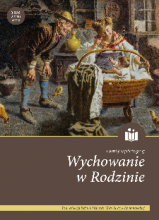Edukacja instytucjonalna dzieci niewidomych, niesłyszących i z wadami wymowy na Słowenii przed II wojną światową
Institutional education of blind, deaf and speech-disabled children in Slovenia until World War II
Author(s): Mojca Šorn, Dunja DobajaSubject(s): History, Social Sciences, Education, Sociology, Social history
Published by: Zakład Historii Edukacji w Instytucie Pedagogiki Uniwersytetu Wrocławskiego
Keywords: blind; deaf and speech-disabled children; education and schooling; Slovenia; 1918–1945
Summary/Abstract: Aim: The purpose of the following contribution may be somewhat atypical, as itdeals with the so-called substitute families of the blind, visually impaired, deaf, and hearing-impaired children in Slovenia in the period between the world wars. In Slovenia, substitute families were represented by the institutes that also encompassed boarding facilities with an educational-developmental programme apart from the educational practical component of schooling. The expert teachers strived to ensure that as many as possible blind and deaf children could benefit from this special treatment. Methods: Based on the accessible archive materials and appropriate literature, the authors follow the path of blind and deaf children from their early years to the gaining of their professions, which guaranteed the individuals’ independence in their future life and ensured their integration into the intergenerational relations. Results: The authors have as certained that the blind, deaf, and speech-disabled children who were included in suitable educational and schooling processes during the first decades of the 20th century had a better chance of taking an independent part in the society. Most of them were aware that the institutes had given them excellent life lessons that transcended the mere acquisition of knowledge and physical skills. Conclusions: Despite the legislation that prescribed compulsory education also for the deaf, speech-disabled, and blind children, less than a half of these children received any special education and schooling before the end of World War II. The main reason for this was the ignorance of many parents, who were unaware that the possibility for the schooling of their children even existed. In this regard it should be pointed out that the leading cause of this was the limited capacity of both institutes: as it happened, soon after their establishment, it turned out that they were appropriate only in the sense of their programme. The management staff was aware that the specialised educational and social tasks should be carried out to the greatest extent possible, but their efforts to ensure this kept falling on deaf ears with the state until as late as the second half of the1940s. The pupils who were in dire need of special skills would receive equal education and schooling opportunities only after World War II, when the spatial constraints of both institutes were addressed, among other issues.
Journal: Wychowanie w Rodzinie
- Issue Year: XVIII/2018
- Issue No: 2
- Page Range: 225-240
- Page Count: 16
- Language: English, Polish

